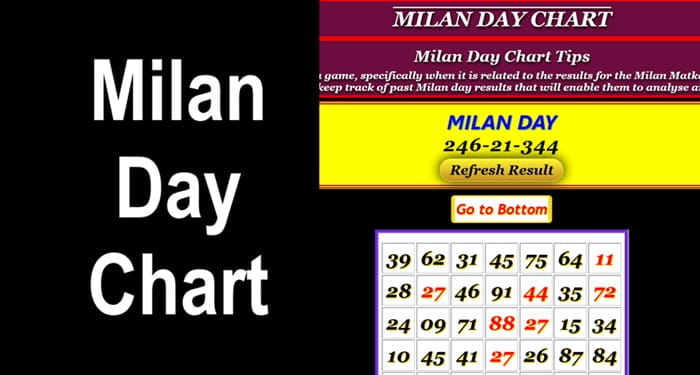In the world of Satta Matka, Milan Day Chart holds a special place among players and enthusiasts. As one of the most played and widely followed Matka games in India, Milan Day offers daily results that are tracked and analyzed by thousands of people, both online and offline. For newcomers or even experienced players looking to understand this chart in detail, here is a comprehensive guide that breaks down what Milan Day Chart is, how it works, and how to read it.
What Is Milan Day Chart?
The Milan Day Chart is a visual representation of the daily results of the Milan Day Satta Matka game. It showcases the winning numbers (open and close results) for each day over a period of time. These charts help regular players to analyze patterns, trends, and frequencies to improve their guesses for future bets.
The Milan Day game usually runs during the daytime hours with a fixed schedule—results are typically declared around 3:00 PM to 5:00 PM (IST), making it a daytime favorite among Matka fans.

Types of Milan Day Charts
There are several variations of the Milan Day Chart available online, each serving different analytical purposes:
1. Milan Day Jodi Chart: This chart displays the Jodi (pair) numbers of the day. A Jodi is a two-digit number formed by combining the opening and closing results. For example, if the opening number is 27 and the closing number is 45, the Jodi is 27-45.
2. Milan Day Panel Chart: This shows the panel numbers (a set of three digits), which are derived using specific Matka formulas. The panel numbers help experienced players decode the market’s behavior and predict upcoming results.
3. Milan Day Result Chart: This is the most basic form of the chart that simply logs the open and close results for each day, helping in tracking basic trends.
How to Read the Milan Day Chart
Reading the Milan Day Chart involves interpreting three key elements:
- Opening Number: The first result number released for the day.
- Closing Number: The second result released later in the day.
- Jodi: A combination of the opening and closing numbers (e.g., 28-56).
For those with experience in Satta Matka, identifying patterns in these results can be a valuable tool in placing strategic bets. Many players use mathematical strategies, guessing formulas, and historical comparisons to make educated predictions.
Why Is Milan Day So Popular?
The popularity of the Milan Day game and its chart can be attributed to several reasons:
- Daily Game: It is played every day, giving regular opportunities to participate.
- Consistent Timings: The predictable afternoon result schedule makes it convenient.
- Trusted by Regular Players: Being one of the oldest Matka markets, it has a loyal user base.
- Availability of Charts Online: Platforms like sattamatkadpboss.co and satta143.in update results regularly, providing real-time access to charts and historical data.
Important Note: Play Responsibly
While Satta Matka, including Milan Day, is immensely popular in many regions of India, it’s important to note that gambling is illegal in many states and can be financially risky. These games should not be viewed as a source of income or financial advice. If you choose to follow or participate in such activities, please do so with full awareness and caution.
Conclusion
The Milan Day Chart is more than just numbers—it is a strategic tool for Satta Matka players aiming to decode trends and increase their chances of winning. With multiple versions like Jodi, Penal, and Result charts available online, users can dive deep into analysis. However, while the game may offer entertainment and excitement, it’s essential to practice self-control and responsible gaming.
If you are exploring Milan Day for informational purposes or curiosity, these charts offer an interesting look into one of India’s most enduring number games.

